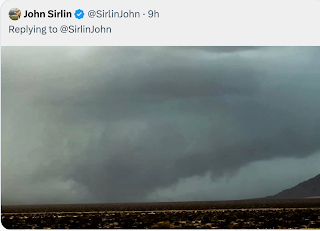Climategate Update II
One question I often get on the issue of global warming is Why is there doubt about the temperatures? Meteorologists have had thermometers for hundreds of years. The premise of the question is correct. But creating a global temperature index is, unfortunately, far more complicated than is immediately apparent. Because most of the earth is covered by water, any world temperature index must include sea surface temperatures. In the 1940's the method for measuring those temperatures changed and an error was recently discovered, requiring a reexamination of ocean temperature data.
The ocean temperatures are a bit esoteric, so lets take a look at the land temperature measurement problem.
From about 1850 to 1990 temperatures across the world were measured with mercurial thermometers contained inside Stevenson screens, whitewashed boxes with louvered sides like the one pictured above in Union City, Missouri, in 1979. Because of labor costs and the perception that human weather observers made errors, it was decided by many governments throughout the world to switch to electronic thermometers. Here in the United States, the National Oceanic and Atmospheric Administration (NOAA) created the U.S. Historical Climate Data Network (USHCN) that was intended to be a high-quality network of weather stations that would measure global warming.
Mission accomplished: They certainly measure warming.
Electronic thermometers require electricity. Where is electricity on the outside of a home? Near the air conditioner. And, what do air conditioners vent? Hot air! Combine that with a maximum 50 ft. electric cable run and you have a built-in "warming trend." Here is a great illustration from Georgia (click to enlarge):
The old Stevenson screen is in the background. Under United Nations citing guidelines, the thermometer is supposed to be at least 100 ft. from a building (buildings give off heat). Here the sensor (the small white object on top of the pole) is near concrete, 14 ft. from a building and less than 9 ft. from an air conditioner! This causes a warm bias in these readings.
Anthony Watts' Surface Stations project has documented this problem in detail. Here are a couple of my "favorites:"
Next to a building, over concrete, next to an air conditioner (just right of the dumpster) and, best of all, above the family bar-b-que. Here is one from Colorado next to a building and 3 ft. from the air conditioner:
As you will see if you visit Anthony's Surface Station project, this is the rule not the exception.
And, it is not just the United States. Look carefully at the position of the new automated weather station in Rome (click to enlarge):
These weather stations were installed during the early to mid-1990's. Here is the NASA world temperature readings (which use the USHCN readings) from 1990 to 2000:
You see temperatures dip from late 1992 through 1994 due to the effects of the eruption of Mt. Pinatubo. After that, temperatures rise rapidly. Some of that rise is clearly due to the warm-biased readings from the new weather stations. This warm bias has likely caused a "plateau" which makes current temperatures seem warmer than they actually are.
And, now that the original data that make up the CRU database has been lost, it will be nearly impossible to understand exactly how much temperatures have risen. A tremendous loss for science and for those who depend on this type of data to make policy decisions.
By the way, I wish to give credit to the person who first discovered this problem: Dr. Roger Pielke, Sr. He has his own climate blog that goes into the science in detail.
The next post in the Climategate update series will explain how the biased data has led to wrong conclusions.










Comments
Post a Comment